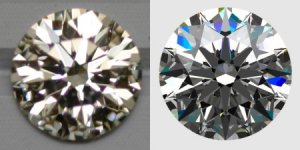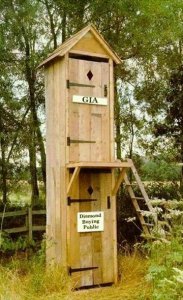- Joined
- Aug 15, 2000
- Messages
- 19,209
So the point they made in the article Rihno is that the dome lighting was used to test the resluts of the dealer lighting and their new CVE (=DD) and their old computer metrics.Date: 5/27/2006 5:02:32 PM
Author: Rhino
Thanks for the links to the charts. Here is what they reported regarding the use of the domes in the Fall 2004 G&G article.Date: 5/26/2006 5:28:29 PM
Author: Garry H (Cut Nut)
Rhino you claim to be an expert in this area, yet you really do not follow through before making your statements.Date: 5/26/2006 11:24:10 AM
Author: Rhino
Hi Garry,Date: 5/25/2006 12:58:01 AM
Author: Garry H (Cut Nut)
Storm try the attached 46 degree dome lighting that gIA used as their model for obsured lighting.Date: 5/24/2006 10:54:50 PM
Author: strmrdr
Date: 5/24/2006 10:32:10 PM
Author: Garry H (Cut Nut)
For all those who have DiamCalc and want to see what a diamond looks like in the cat liter box - here is my best approximation for the lighting in DiamCalc.
way too much head shadow compared to the DD, no cigar
I modeled it here with fading to the hemisphere light, which i think they would approve of.
Since this was the lighting model they used in their software ''metric'' that approximated the dealer lighting that the fluoro DD light aproximates - check it out and see if you think I have too much head shadow in the DD?
The white dome was used in some of the studies but none of the observation testing was performed with this. White dome stuff is kinda moot.
Read tha last line here and you will see that about 8% of GIA''s total observations were done thru this dome (5095).
http://www.gia.edu/pdfs/cut_table_1.pdf
http://www.gia.edu/pdfs/cut_table_1.pdf
great work I am sure John, but Wink - forget it - this is a non issue
Early Observatoin Testing: Brightness and Fire
Our Brightness team examined a set of fire Research Diamonds, RD01 - RD05, for birghtness differences in the dome environments described above. We confirmed that the predictions of a specific brightness metric (the relative brightness order of hte five diamonds) matched the observations of hte Brightness team in the environment for that metric. We then used relative observation of 990 pairs of Research Diamonds (core reference set) in dealer-equivalent lighting to select the appropriate brightness metric; that is, we adjusted the modeling conditions (e.g., lighting conditions or viewing geometry) of our brightness metrics until we found one that predicted brightness ranking in the same order as the observational results.
According to the Fall G&G article the Brightness team did the examinations through these to see how they corellated but as far as I know none of the observers used it. Even if what your saying is accurate (that 8% did and I have no reason to doubt you) that means 92% didn''t causing me to stick to my view. Dome viewing while interesting = moot. To me, viewing a diamond in diffuse daylight that represents the assessment I''ll see in other diffuse daylight environements represents the most accurate determination for me personally since those are the environements people regularly find themselves in on a daily basis.
That doesn''t mean I''m not interested to see the lighting schemes you come up with in DiamCalc Garry to compare to common viewing for comparison.
Peace,
So the 46 degree obstruction model got the closest results that they could model in their WLR program that matched the DD lighting results.
That is, they got their best match in preferences from a 46 degree dome and DD.
So why is that so hard to understand? (apart from the convoluted way the information was presented).
So if you wanted to pick the brightest diamond then look at thru a salad bowl with a huge black top. And as long as there is not a ''pattern related defficiency'' you will have the brightests and least brightest cut grading system.
Now you and I both know that is dumb to block the top 46 degrees of light. But that is what this article shows.
So back to Storm''s comment - no cigar for my lighting model - too much head shadow compared to the DD - well? Hello?


![gorilla_carrot_lg[1].jpg gorilla_carrot_lg[1].jpg](https://www.pricescope.com/community/data/attachments/71/71110-17c7fa77b2d0e69418848b52595905d9.jpg?hash=F8f6d7LQ5p)








300x240.png)